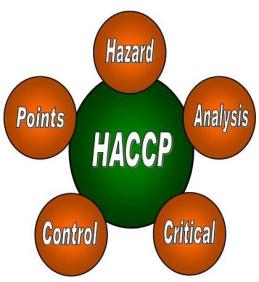If you are within the business of marketing edible things, you may need to require a glance at ISO 22000 HACCP food safety system principles. Standards for keeping edibles safe for consumption could be basic requirements however the ideas printed within the Hazard Analysis Critical Control Points take safe practices to an entire new level.
There are seven principles to appear into. Normally although, what the system seeks to accomplish is to stop contamination the least bit levels of production from preparation to distribution. The strain on hindrance rather than post production detection is good as a result of trying into every vital step before distribution ensures that no minute hazard or material is incomprehensible. What precisely are these principles?
The first principle stresses analyzing hazards. This is often the step wherever attainable hazards are known for all stages in production. In an indoor food safety audit an auditor will establish parts that are chemical, biological or physical in nature. Hazards will take the shape of microbes, toxins or physical particles.
After characteristic potential hazards, the second principle moves on to see the management points within which contamination are often prevented. Establishing management points are often as straightforward as outlining a procedure like raw item handling, cooking, packing and distribution.
The third principle combines the ideas behind the primary and second principles. At this level most or minimum limits are set for every of the particular management points to stop contamination. The foremost basic example is minimum heat settings for cookery specific edible things.
The fourth ISO 22000 HACCP food safety system principle organizes the third principle by shaping procedures and persons answerable for observation management points. This implies that there’s clear documentation to follow on however every step of production is checked and World Health Organization performs these regular checks.
The fifth principle focuses on taking corrective measures just in case checks show that standards aren’t met. This might entail going back to the primary stage of the assembly method or fully throwing out doubtless contaminated things before they’ll be pushed dead set customers. Corrective steps have to be compelled to be known beforehand so it’s clear what steps ought to be taken within the event of contamination.
The sixth HACCP food safety audit principle involves checking the system of observation itself. There ought to be an everyday method in situ that appears into instrumentality or tools that are required for observation the assembly method. Observation devices and therefore the completely different elements of the tools utilized in production ought to be in high condition to create observation effective and sure-fire.
The seventh and last principle revolves around food safety documentation. Each a part of the system from hazard analysis to display analysis ought to have elaborate tips in situ. What is more, these ought to be supported standards that are supported accepted and evidenced research.
There is little question that following HACCP food safety principles is crucial primarily as a result of it’s the most effective thanks to guarantee shopper well being. From a business perspective, it’s conjointly price noting that following these principles is additionally essential to secure higher business results. You will be in business longer and have additional purchasers if you create positive you have got a solid system which will keep customers healthy and happy.



